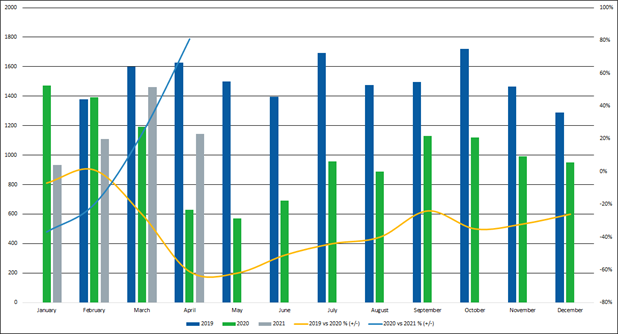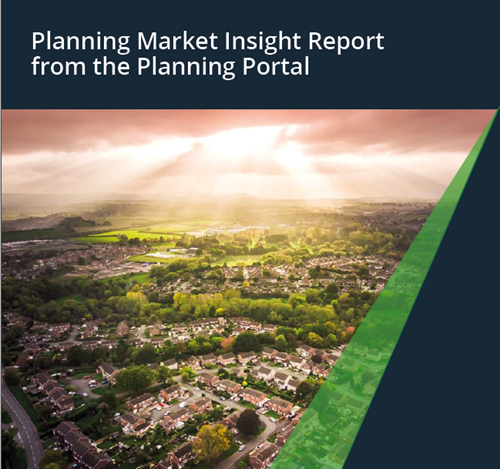
TerraQuest News
- May 2021
Out of Home Advertising: adapting to the pandemic
The Planning Portal is in the unique position of receiving around 90 percent of all planning applications submitted to Local Planning Authorities across England and Wales. Each month, we assess and publish this data in our Planning Market Insight Report. May’s report took a deep dive into Advertisement consent applications.
When looking at application submission in the first full year since the initial lockdown in late March 2020, Advertisement consent applications have been the application type worst affected in terms of the numbers submitted: 34 percent down when comparing 2019 against 2020.
Outdoor advertising is one of the industries that over recent years has seen a major change in how goods and services are promoted through the use of new digital and interactive media. To give this greater perspective, Advertisement consent covers a range of outdoor marketing media from the traditional ‘old school’ billboards that are now fully digital platforms, to utilising telephone boxes, bus stops, or anything static on our streets that is now classed as ‘street furniture'.
Effectively, anything that doesn’t move has potential for an advert. The chart highlights the impact on these types of applications that correlates exactly with COVID-19 and lockdown from late March 2020. Over 2020, it shows an average monthly reduction of 34 percent.
For Outsmart, the Out of Home Advertising Trade Association, 2020 was a year when they learned a lot. Tim Lumb, Director of Outsmart, tells us more about how the oldest advertising medium adapted to the newest challenge:
“OOH business quickly invested in additional on-device data and leaned heavily into analysing changing audience behaviours. A week-on-week view of public mobility levels and location data enabled us to track behaviours and spot emerging trends; informing the impact of advertising creative. So, what did we learn? In short: data challenges our gut-feel perceptions. What we saw was audience adaption, not disappearance.”
“Firstly, the data revealed movement restrictions changed the old habits of ‘rush-hour’, ‘school run’, ‘drivetime’, and ‘lunchtime economy’ to new ones. People spent more time going out in their local environment, across varying times of the day. The suburbs and associated local retail and leisure areas became more important and frequented. Secondly, despite lockdown restrictions, around half (49 percent) of workers were unable to stay home and continued to travel to and from work. Thirdly, OOH became not ‘just’ about advertising. The industry donated a huge amount of unused space to promote essential public health messaging and to thank keyworkers of all stripes. This helped forge a sense of national conscience in the face of uncertainty and the public responded positively, seeing a different side to OOH for the first time in decades.”
Looking at the more recent months of March and April 2021, the chart clearly shows that the market confidence is responding to the easing of lockdown measures as businesses prepare to welcome back customers. With indoor hospitality venues shortly re-opening, this, in turn, will lead to increased movement and visits back to city centres, towns, and business districts across the country. The return of mobility across the population will mean the return of the marketing audience that is reflected in the return of advertisement application submissions.
Download the full report, with access to national and regional data, application types, and application fee income, by subscribing to our mailing list.
The above article was provided to us by the Planning Portal.
Find out more about the MIR Report here.




